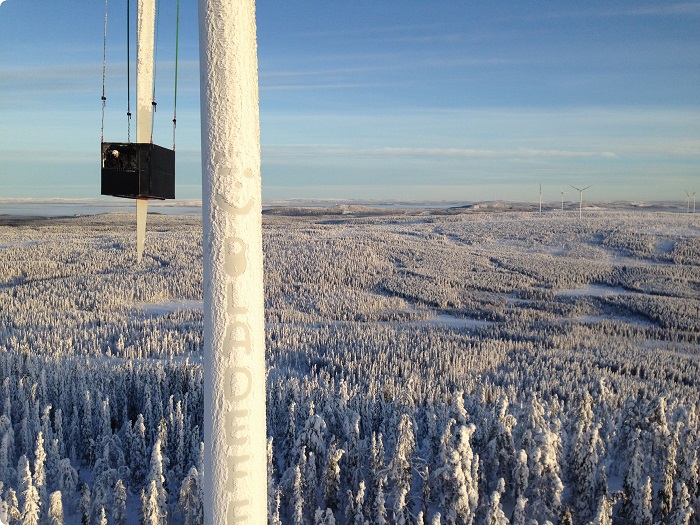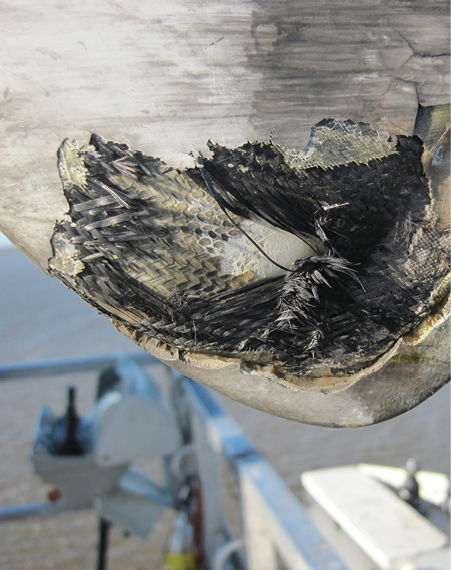Blade repairs in winter are now possible thanks to materials that cure in the presence of UV light and have more tolerance for low temperature and high relative humidity. What’s more, the material allows repairs that save blades that are no longer manufactured. That’s the message from Ville Karkkolainen, with Finland-based Bladefence (www.bladefence.com) a recent blade repair company that is taking advantage of the possibilities of the new materials. Karkkolainen made his remarks at the recent Wind Operator Congress in Chicago.

A Bladefence crew constructed the enclosure to repair a blade damaged by fire. The five-day winter repair was necessary because replacement blades were no longer available.
He says the company cleans blades, performs blade inspections looking for flaws with ultrasonic, non-destructive testing, analyzes damage, and performs repairs, retrofits and upgrades.
“Although we have been certified for blade repairs by Germanisher Lloyd since 2012, blade repair is a tricky area because there are no industry standards,” he says. “That may be because blade manufacturers are keeping their cards close to their chest – not telling what materials are used or where,” he says.
His observation is that blade repairs are often put off as long as possible. “Reasons for that are the material of which blades are made and the material used to repair them are not well suited for onsite repairs. You need factory conditions to receive a quality repair in many places. For instance, in Chicago today it is 57°F with 76% relative humidity. Even though it is a beautiful day, those conditions are out of bounds for blade repair materials and its only September.”

Lightning has severely damaged the blade tip. A Bladefence crew was able to repair the tip and return the turbine to service.
Restrictions to material use are an issue because they lead to a short window of operation so owners schedule work on the big things in relatively short summers. “Conventional repair materials have worked but they are messy and hazardous. These are mostly two-component materials that need accurate measurements for a proper mix. On top of that, curing times are ridiculously long. A large repair can take 24 hours for curing and post curing. And a rising humidity during night hours spells disaster for many repairs,” he says.
About 10 years ago a company called Gurit (www.gurit.com/) started developing a novel approach to blade repair with curing initiated by UV light. “This has significant advantages, most of which are related to the temperatures,” says Karkkolainen. “Now we can work at significantly lower temperatures and more importantly, with up to 90% relative humidity. Also, curing times are reduced by a factor of five and are measured in minutes, not hours. So that provides a huge expansion of the work envelope.”
To illustrate the material capabilities, he tells of a wind farm in Finland that was experimenting with a heat blanket to reduce blade icing. The blanket caught fire which ignited the blade. “The owner was lucky to save the turbine, but the 26-m blade was ruined. Worse yet, there are no replacements. The blade molds were long gone,” he says.
Karkkolainen says his crew was able to repair the blade during the winter using the UV curing materials. “Furthermore, our crew devised a large weather shelter, constructed around the blade to control the environment. That repair was completed in five days and the turbine returned to service,” he says. Karkkolainen says his company will have an office in the U.S. next year. WPE
Filed Under: News




